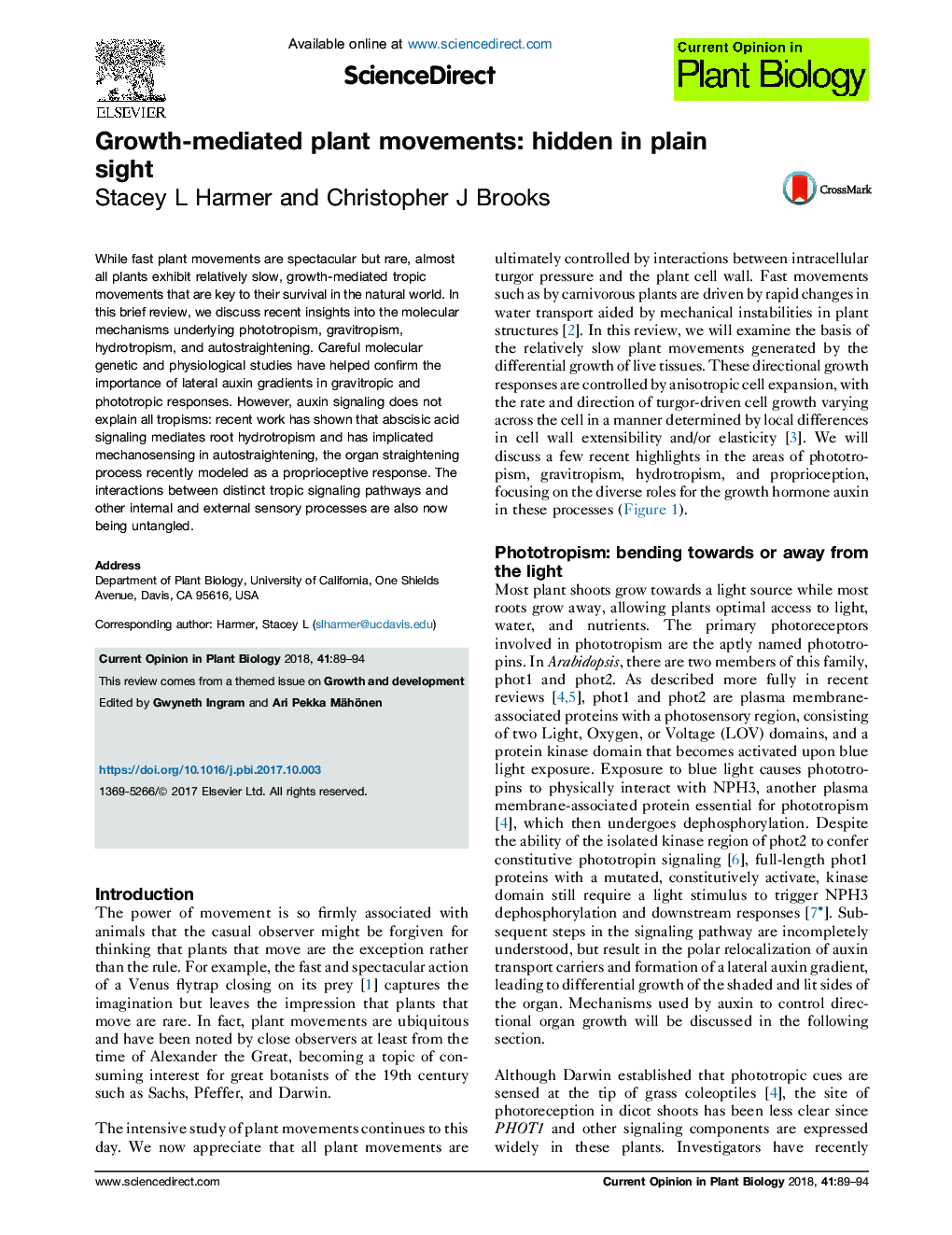| Article ID | Journal | Published Year | Pages | File Type |
|---|---|---|---|---|
| 8380319 | Current Opinion in Plant Biology | 2018 | 6 Pages |
Abstract
While fast plant movements are spectacular but rare, almost all plants exhibit relatively slow, growth-mediated tropic movements that are key to their survival in the natural world. In this brief review, we discuss recent insights into the molecular mechanisms underlying phototropism, gravitropism, hydrotropism, and autostraightening. Careful molecular genetic and physiological studies have helped confirm the importance of lateral auxin gradients in gravitropic and phototropic responses. However, auxin signaling does not explain all tropisms: recent work has shown that abscisic acid signaling mediates root hydrotropism and has implicated mechanosensing in autostraightening, the organ straightening process recently modeled as a proprioceptive response. The interactions between distinct tropic signaling pathways and other internal and external sensory processes are also now being untangled.
Related Topics
Life Sciences
Agricultural and Biological Sciences
Plant Science
Authors
Stacey L Harmer, Christopher J Brooks,
